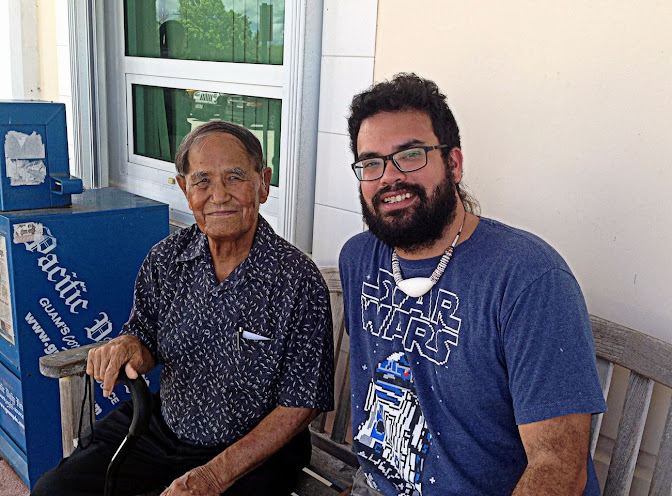Remembering My Year in Atåte
From 2014-2015 I spent a year in Atåte in the village of Malesso’. Not in a physical sense mind you, but in an intellectual and scholarly sense. During that time I was a professor in the Chamorro Studies Program at the University of Guam, and I worked with the late Jose Måta Torres to publish his memoirs “Massacre at Atåte” through the University of Guam. I was so thankful that we were able to see his book to completion in 2015, as he would pass away later that year.
In addition to being the memoirs of a young man, coming of age in Japanese-occupied Guam, the book also provides a first-hand account of the uprising of the people from Malesso'. After the people of the village learned that the Japanese had attempted to massacre 60 of their friends and family at Tinta and Faha, most felt that it is only a matter of time before the rest were slaughtered. On the eve of the US invasion, a group of men led by Jose "Tonko" Reyes, surprised the Japanese, killing most of them and freeing their families held at a camp in the Atåte area. Soon after, a group of six, including a young Jose Torres, would paddle out to the circling American ships, to inform them of what was happening on island. From this perspective I always like to tell people that “Guam's Liberation Begins in Atåte.”
Although the book is written primarily in English, I appreciated the fact that much of the spoken parts are in Chamoru, including the scene where the men kill their Japanese oppressors. When Mr. Torres was writing his manuscript, he asked me what I thought about him using Chamoru in the book. I told him I loved it and that he should use more.
He was glad to hear that, since for him all of his memories from the war are in Chamoru and he felt it would be an injustice to just translate them all into English, and leave the Chamoru behind. This was one thing that I loved about working with Mr. Torres. He was well known on island for a variety of things in his life, but one of them was his radio show “Classical Concert” on KPRG. He would play classical music but also speak about it in Chamoru. For most it was a strange combination, but for Mr. Torres it made perfect heartfelt sense. He loved his native language and he loved classical music, it only made him happier to combine them through his show.
UOG Press published earlier this year an updated edition of “Massacre at Atåte.” This newer edition features a new cover design as well as new historical timelines and notes to help readers understand what was happening in the wider war context in Guam and in the Pacific, while Mr. Torres is narrating his experiences.
My year in Atåte working with Mr. Torres remains a highlight of my life. He was determined that the story of the men who fought the Japanese to protect their families at Atåte be told, especially before he passed away. He believed it was an event that Chamorus needed to remember, because it was one in which they were strong and fought for what was precious to them.





Comments